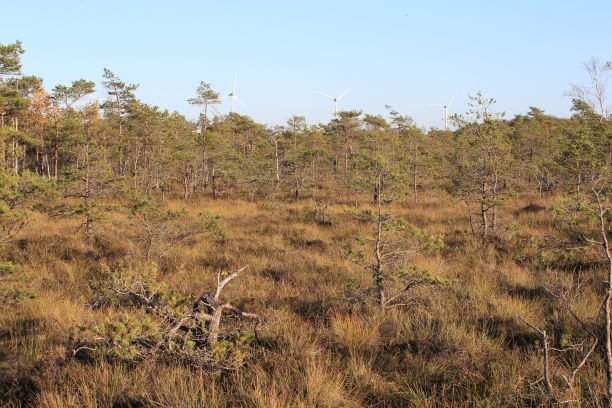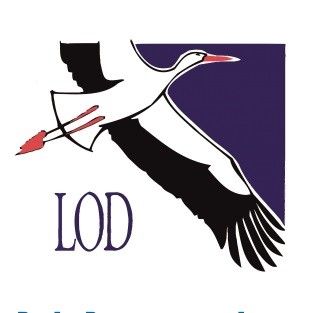Improvement of coastal Svencele bog conservation status

The project aims to restore ecological conditions of the coastal Svencele raised bog though improved ecological conditions of the site and elimination of negative factors on water regime, key species and habitats.
The project will start from laying down technical and legislative preconditions, afterwards to focus on practical actions – restoration of damaged hydrological regime and natural habitats, establishment of surveillance scheme and in parallel work with stakeholders for better support of the project actions. Proper restoration of the damaged, but still rather natural Svencele raised-bog will ensure long-term self-sustainability of the coastal bog ecosystem including conservation of the protected habitats and species and reduction of the pollution.
Situation and background
Svencele bog is the largest natural and not yet destroyed coastal raised-bog with neighbouring fens and wet forest in the western part of Lithuania. Besides, this is the only not yet destroyed coastal raised-bog in Lithuania and among few in the eastern Baltics, which still keeps natural or semi-natural features in the whole area of the bog.
The bog area covers more than 1200 ha. It was formed during the post-glacial period in the area of the former coastal lagoon. However, the area was affected by the drainage in the mid of the 20th century. Although the habitats were not destroyed by human activities alike in many other coastal bog complexes of Lithuania, the regular drainage of the bog affected or partly destroyed the natural habitats and speeded their succession process, thus, losing some of the natural bog features, which are also important for the number of the protected species. Although, Svencele bog still retained a number of its natural features, restoration measures are of crucial importance in order to support and maintain natural habitats complex, which is characteristic for the coastal raised bog. Besides, the bog is in the stage when rather limited habitats’ and hydrological regime’s management efforts can make significant positive impact on the raised-bog restoration with the long-lasting effect. At the same, without additional site restoration efforts, degradation of the raised bog will continue with consequently loosing of its natural features and determine more complicated and costly restoration measures in the future. Thus, the project efforts will ensure effective and cost-efficient impact on the bog restoration.
Current overgrowing of the open raised bog areas with not typical vegetation (e.g. birch trees and heath) indicates too dry hydrological conditions of the raised bog. Habitat changes also determine current unfavourable status of the breeding relict bird species – Black Grouse, Golden Plover, Eurasian Curlew and Woody Sandpiper, i.e. typical breeding birds of the natural large and open raised bogs.
Project activities and effects
Project Goal:
The goal of the project is to restore ecological conditions of the coastal Svencele raised bog though improved ecological conditions of the site and elimination of negative factors on water regime, key species and habitats.
Objectives:
- To lay down technical and legislative pre-conditions for proper protection of the Svencele raised-bog.
- To restore damaged hydrological regime and natural habitats of the Svencele bog.
- To establish surveillance scheme for proper monitoring of the restored hydrological regime and natural values of the Svencele bog.
- To raise awareness on the damaged bogs restoration topic to the decision makers, local communities and other relevant stakeholders in support for implementation of the relevant conservation measures around the Baltic Sea.
Activities:
- Preparation of the technical project on the restoration of the hydrological regime of the Svencele raised-bog and its approval by relevant authorities
- Preparation and endorsement of the site management plan of the Svencele raised bog
- Restoration of the natural hydrological regime and damaged natural bog habitats
- Monitoring of the restored hydrological regime, natural habitats and protected species of the bog
- Training and meetings with local and national stakeholders
Long-Term effects:
The following outcomes will be achieved as part of the project:
- Restoration of the hydrological regime and habitats in the bog;
- Cleaning heavily overgrown area of 60 ha of the formerly open raised bog;
- Involving relevant stakeholders into proper protection and monitoring scheme of the bog.
The following effects will be achieved in the long term:
- Natural bog succession processes reached in the major part of the Svencele bog
Beneficiary
Lithuanian Ornithological Society (LOD)
Partners
Administration of the Curonian Spit National Park (AdCSNP)
Project region
Lithuania, Šilutė district
Project duration
2018-07-01 – 2023-06-30
Budget
total project budget: €299,299.95
funding BaltCF: €250,000.00
